I endeavor to post lessons here I’ve observed or facilitated when I find them valuable. I’m not always successful in posting them quickly, as my bloated draft blog post file will confirm … as will my constant frustration these days with lack of writing time. But this is a really good one, so I felt extra motivated to get it out there.
Grade level-wise, depending on how you set this up, this could really be a Pre-K – 16 lesson. There are many, many ways to take this, including which variables to control for and the goal of the inquiry. In this case it was lifting weight, but it could be speed or number of turns per specific amount of rice (I share a few ideas below). You could charge for materials (a common way to bring more math/data into the inquiry) and challenge students to get the biggest bang for the buck. Anyway here is the challenge:
(We substituted lifting 150 grams of weight for the 15 washers.)
As part of an energy project one group of my 5th graders, a few years back, designed a waterwheel and we actually ran water through it which was messy (usually a bonus for me), and caused the waterwheel to fall apart when the materials got soaked … which is a great challenge for them to overcome on the one hand, but a real time suck you might not want on the other. You decide. To overcome that issue Dr. David Crowther, from the Raggio Research Center for Science, Technology Engineering and Math, borrowed an idea he got from elsewhere, tweaked it some and therefore we used rice instead of water to power our “waterwheels.”
Here are the materials the middle and high school science teachers participating in our training had to work with. They could only use these materials, but we didn’t limit them in the amount which could be another challenge to overcome.
They also had these wood dowels to use as axles, note the dowels were of various circumferences and participants could choose any size or even change axles (some added tape and even pulleys made from paper plates to make the diameter larger for example ). 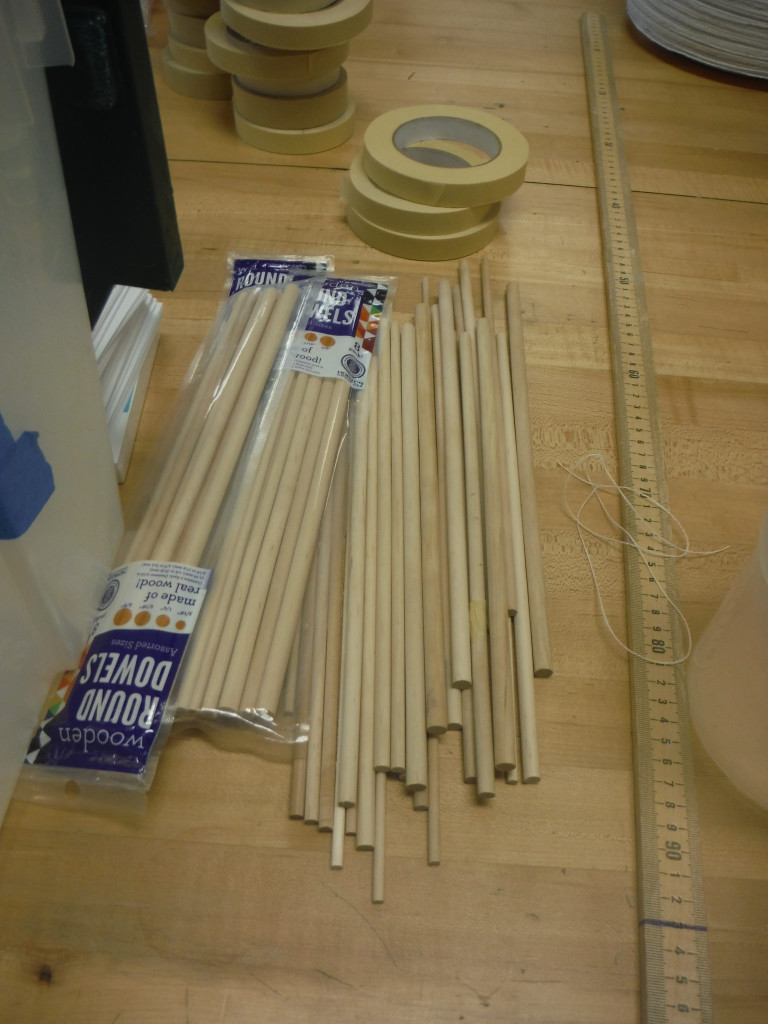
Participants formed groups of 3 and got right to work. One requirement was that groups had to develop a written plan and sketch before they could start construction:
After 45 minutes of initial design and construction time each wheel was tested. A large plastic trash bin was turned into a test facility by taping 2 large washers to the top that the dowels fit in.
The challenge was to lift 150 grams of weight as high as possible with 2 liters of rice. Here is slow motion of one wheel. Note the weights being lifted:
After an initial trial participants were asked to improve and redesign their waterwheels. Then we did one more trial. Here was the winner:
Next we increased the weight gradually and this same design won by lifting 500 grams about halfway. In the classroom what we did in about 2 hours would probably be 2-3 days. And you could easily go much, much deeper. Possibilities include, but are in no way limited to:
- Examining the best designs and then having everyone start over from scratch. BTW, the slow motion was shot with my iPhone. Think of using that feature to really see what is going on to help in redesign and also how you pour the rice. Slow motion has implications for data collection leading to redesign in many activities!
- Using the same waterwheels but change the task to spinning the fastest with no weight attached … did the designs that lifted the most weight spin fastest? Why? Why not?
- Start over and design a wheel that spins fastest as the goal.
- Allow different materials or limit materials even further.
- Increase and/or decrease the amount of rice allowed from 2 liters.
- What design uses the least amount of rice to pull the given weight to the top?
- One photo above shows a design utilizing a pulley made from paper plates. That design failed as it could not develop enough torque to overcome the extra load the pulley provided. Can you design a wheel that would work with the pulley (they didn’t have enough time to redesign in this case).
- Thinking of the pulley example, can you attach something else that the pulley would cause to turn? Perhaps transforming the lift into some other kind of work or energy? Turn an electric generator? Pump water?
Please add your ideas in the comments.
In addition, as I’ve stated many times, this kind of learning is also a powerful integration to other subjects – collect data and crunch it in math, write (and blog to share!!!) about the procedures, learning, data, what was interesting … and perhaps invite/connect with students elsewhere to participate and share their experiences, data, photos. Lots of powerful ways to integrate technology as well – photos, video, blogging, wiki pages, video-conferencing between schools and more. Creative writing stories from the waterwheels point of view explaining what the experience was like for them … this again makes students have to be very observant about everything that happens to the wheel so they can accurately explain what the wheel experiences with lots of description. “When the tiny white grains of rice hit me I was taken by surprise, and at first the grains felt like tiny stinging bees, but I quickly got used to the sensation and then was exhilarated as I began to turn and quickly picked up speed ….” History lessons tied to the development of waterwheels in history and their impact on society. Are waterwheels still being developed in new innovative ways? So much here to research and learn from.
Learning is messy!

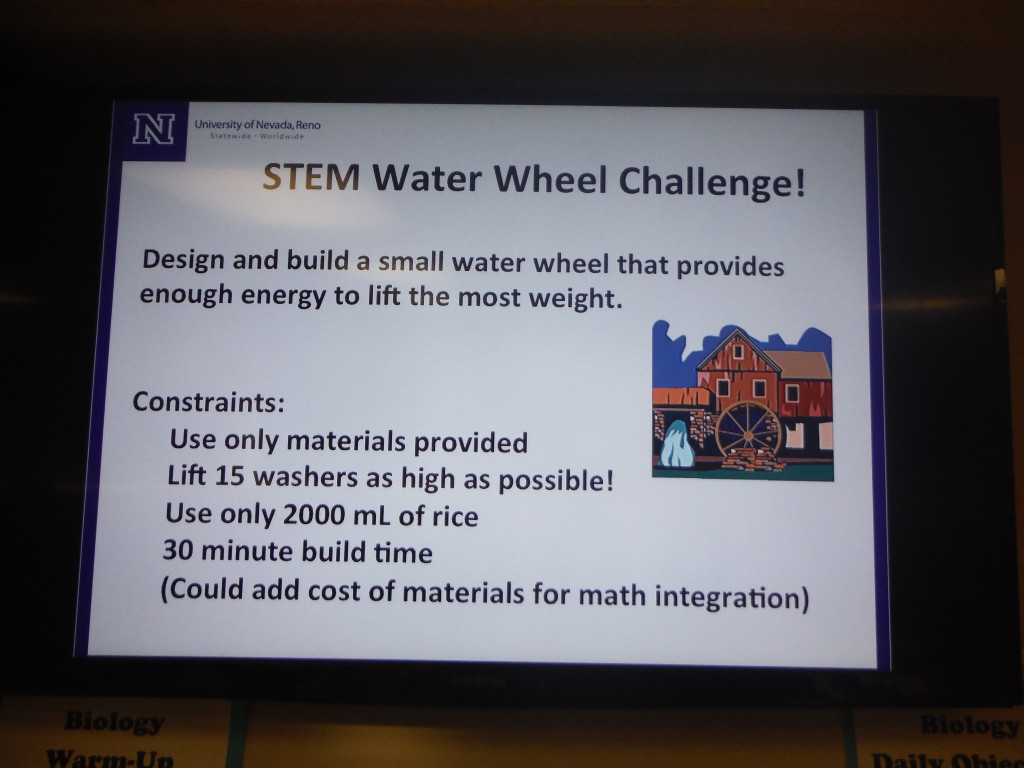
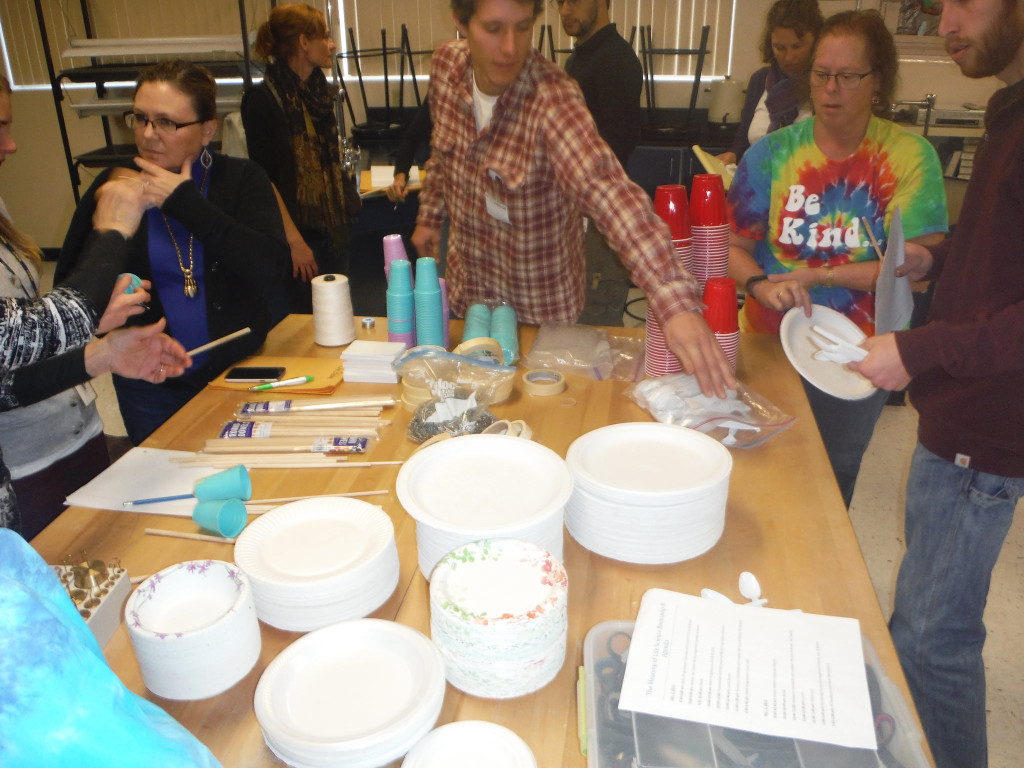
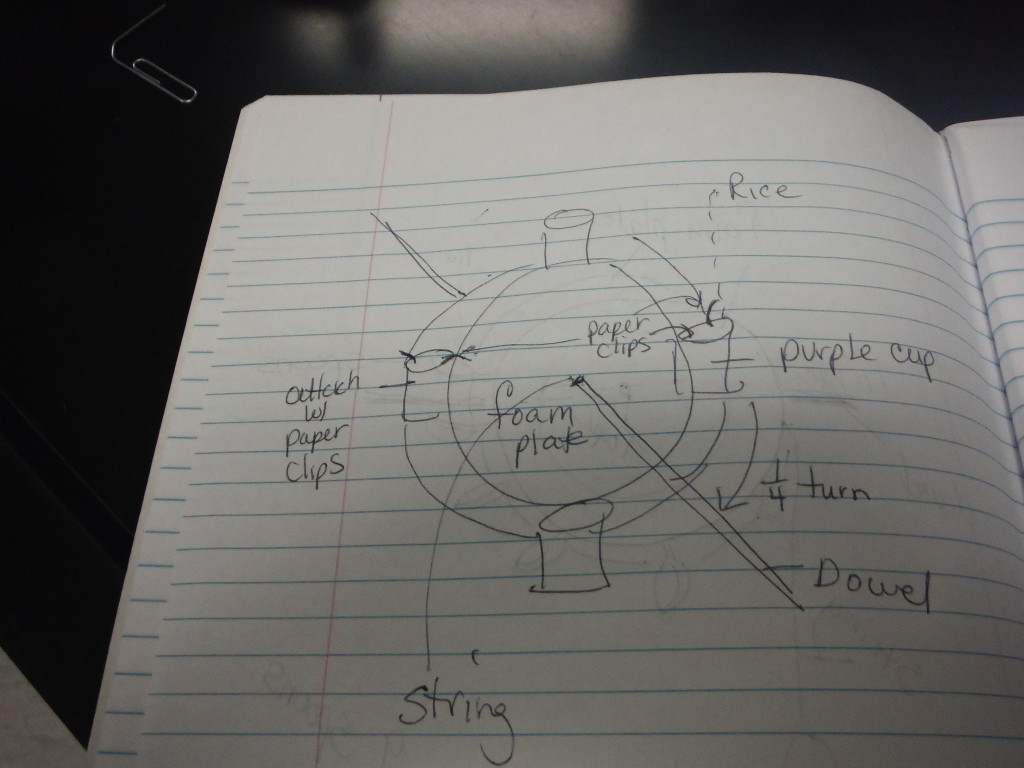
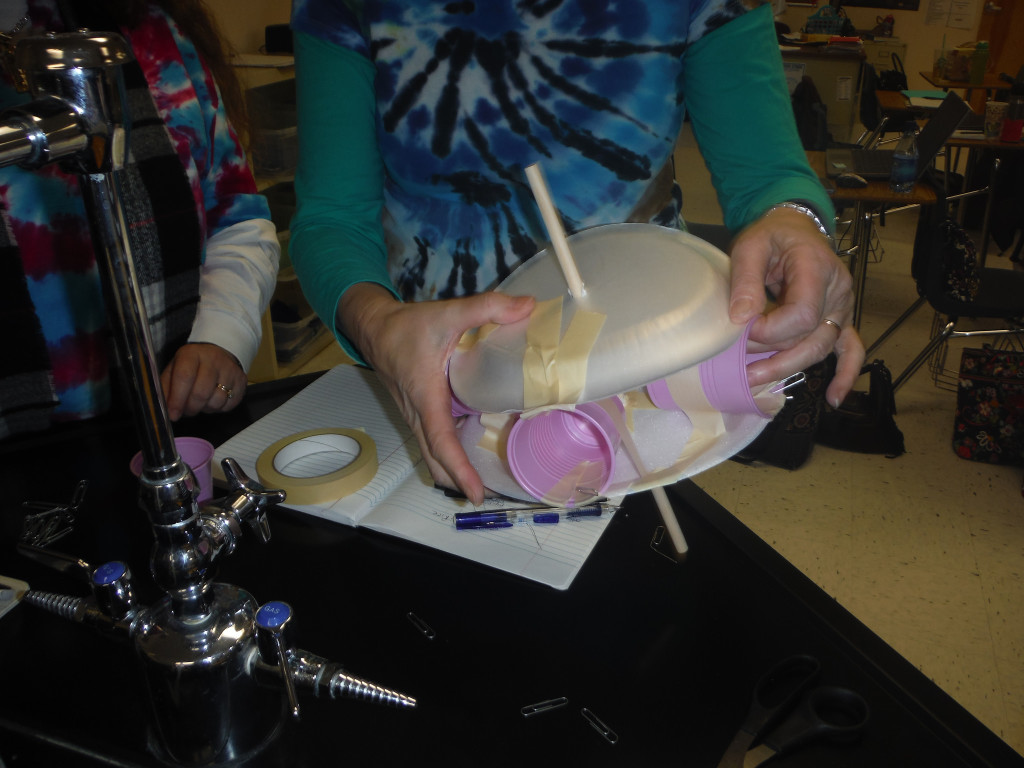
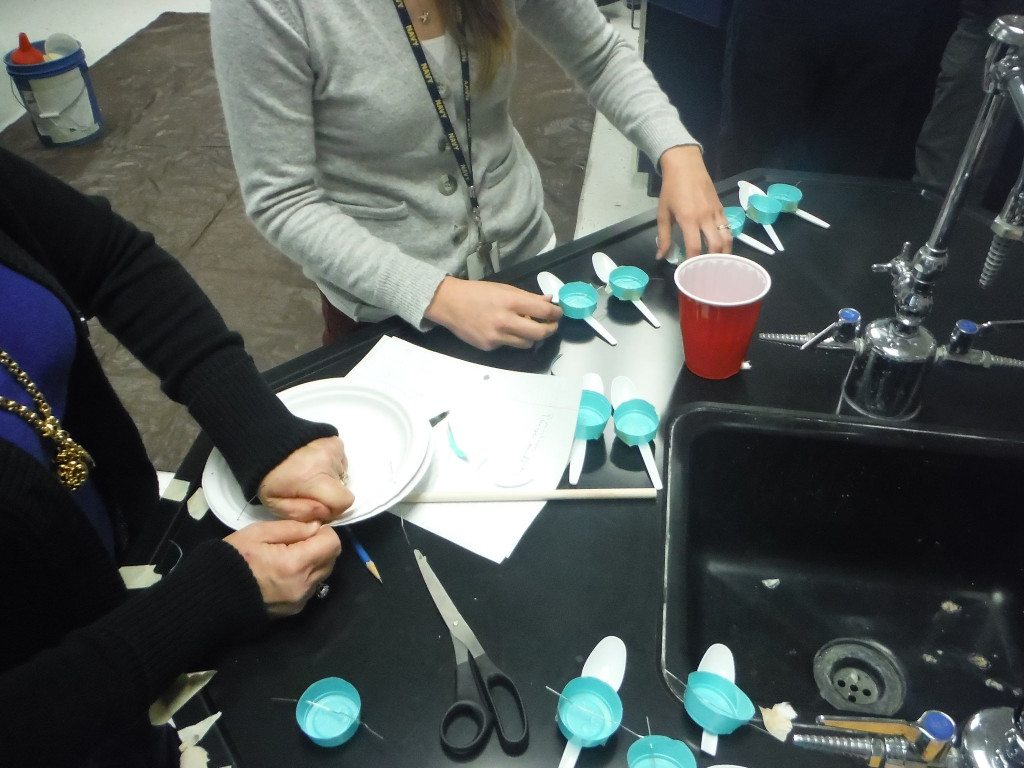
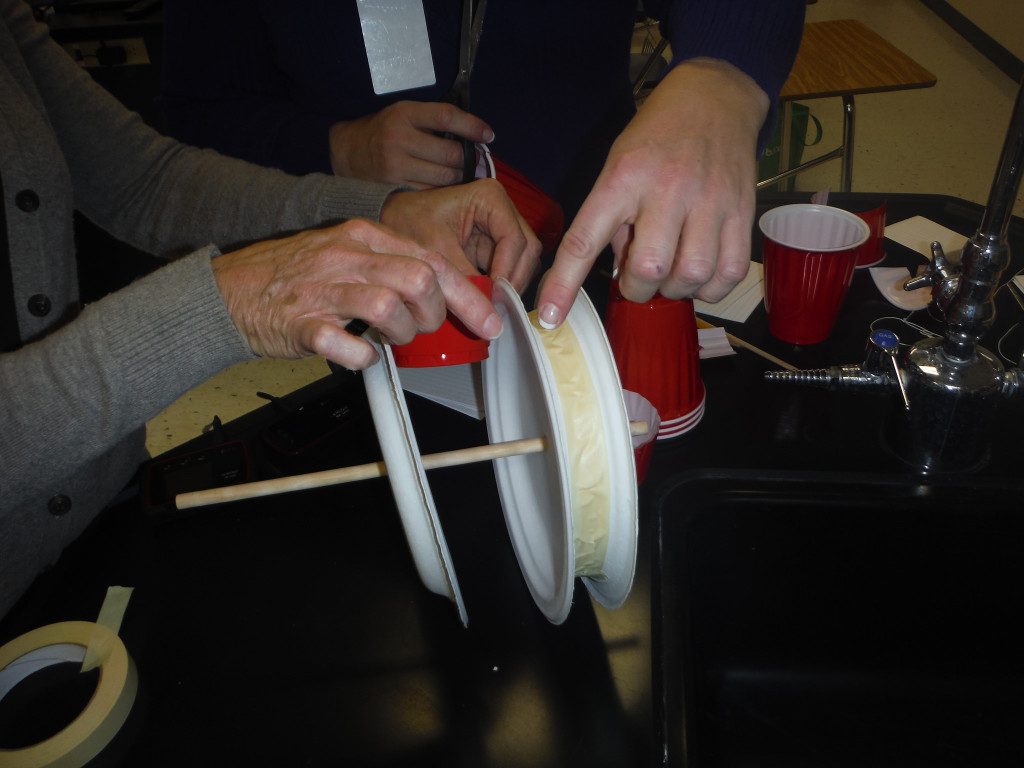
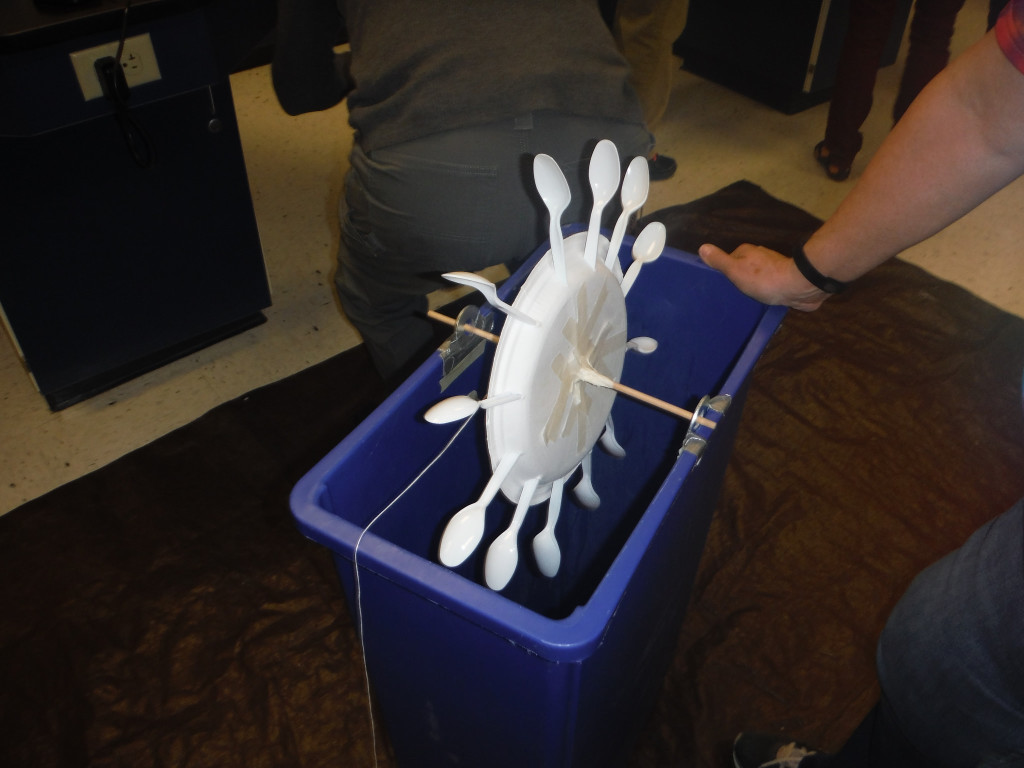
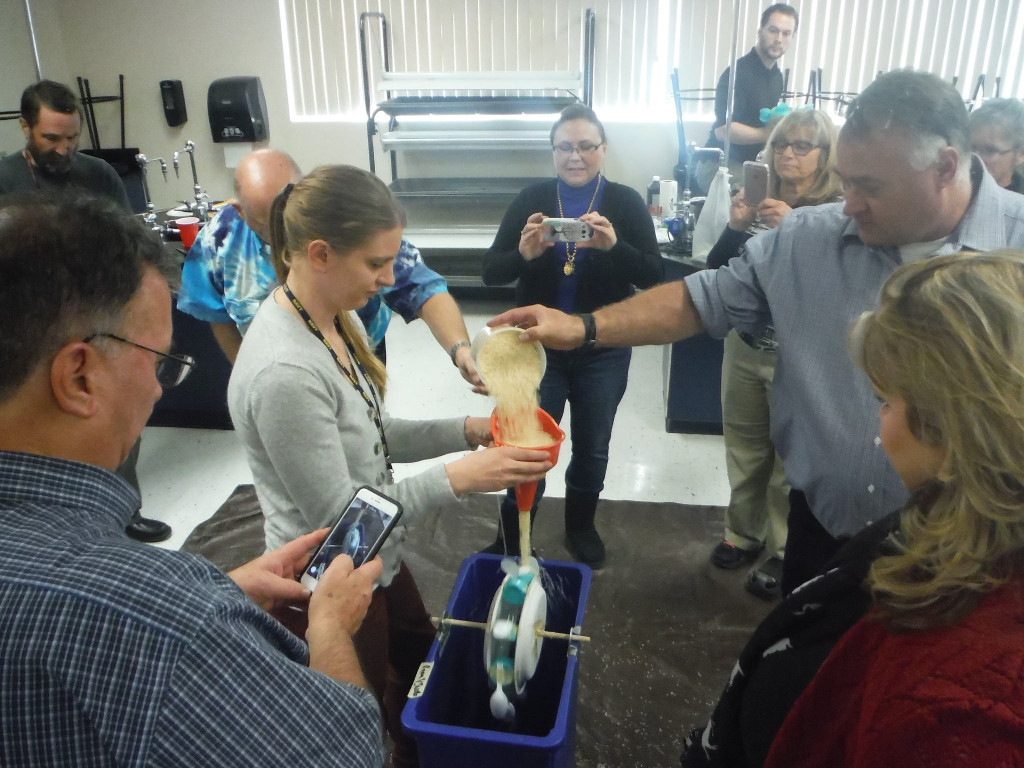
This is great and my students – future teachers – will be doing something similar with third graders this month. I would love to know what the materials were that participants were able to choose from.
Hi Julie – I show a photo of the supplies we used that day besides the dowels – you also have to use a large trashcan and use 2 washers to use to put the dowels in so they spin freely (see photos of the trashcan with the washers – also watch some of the videos to get a better idea how it works) – we cut slots in the top of the trashcan the washers fit in and then gorilla glue them in place. The materials are different sizes of paper plates, cups, plastic spoons, cardboard … whatever you have and is easy to acquire – no steadfast list, what is important is having choices so you get many designs and decisions have to be made by students about which materials to use. Feel free to contact me with other questions – email me too @ learningismessy (at) gmail.com